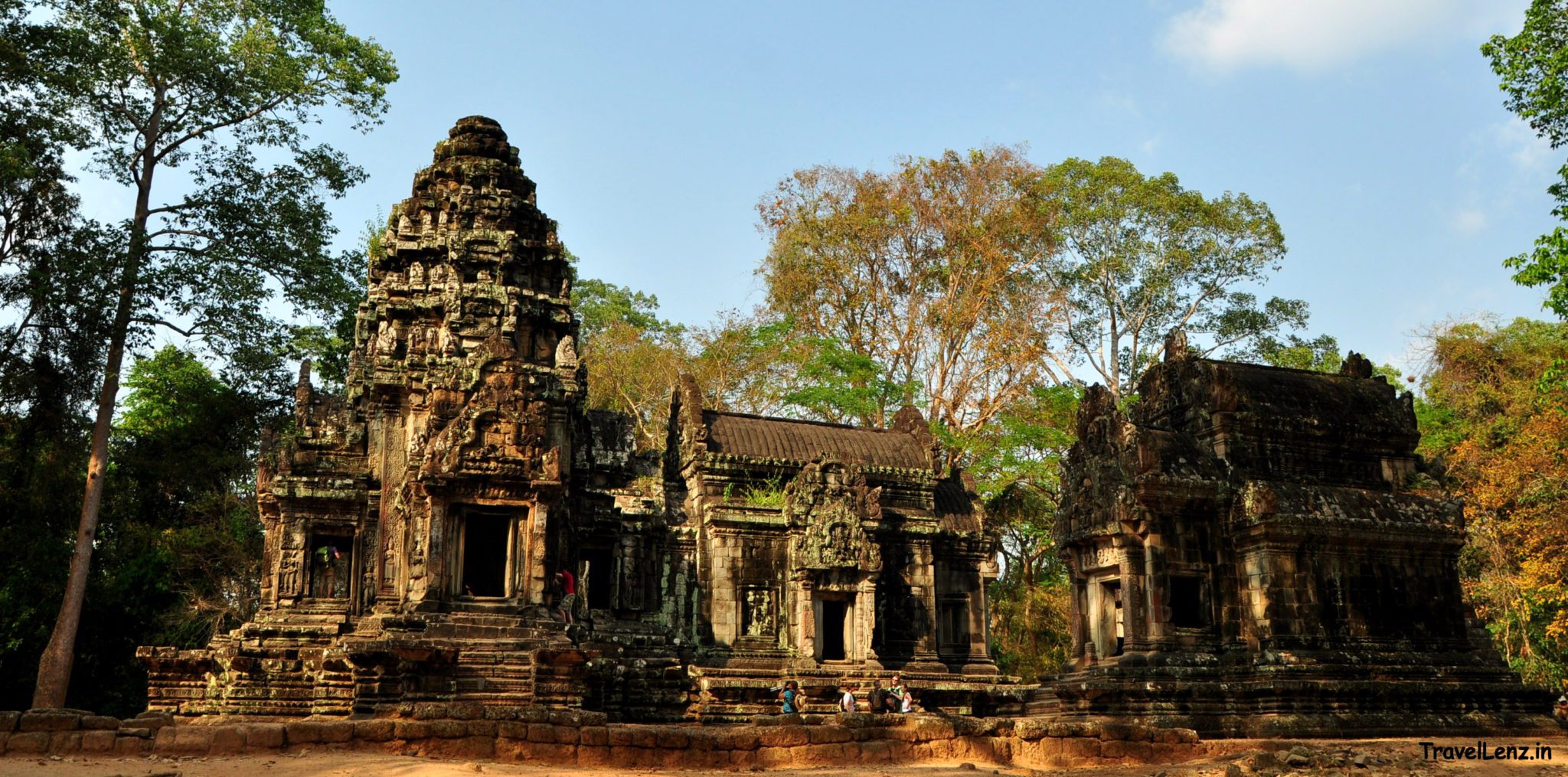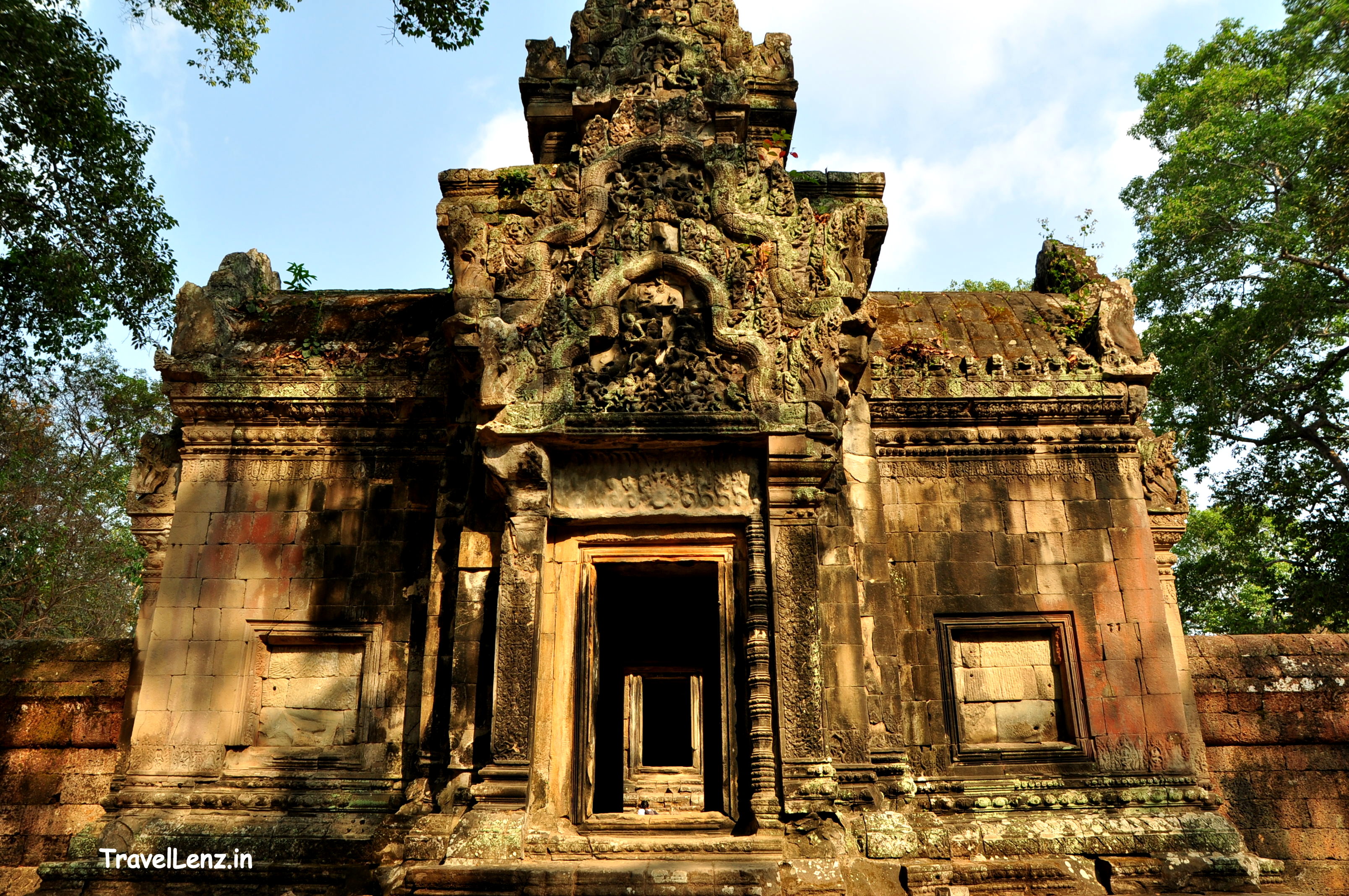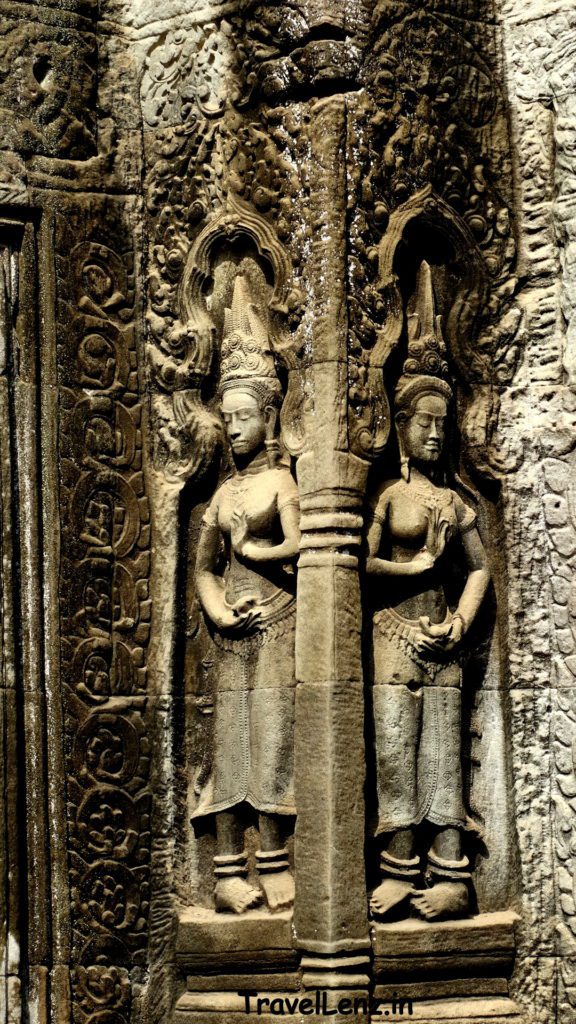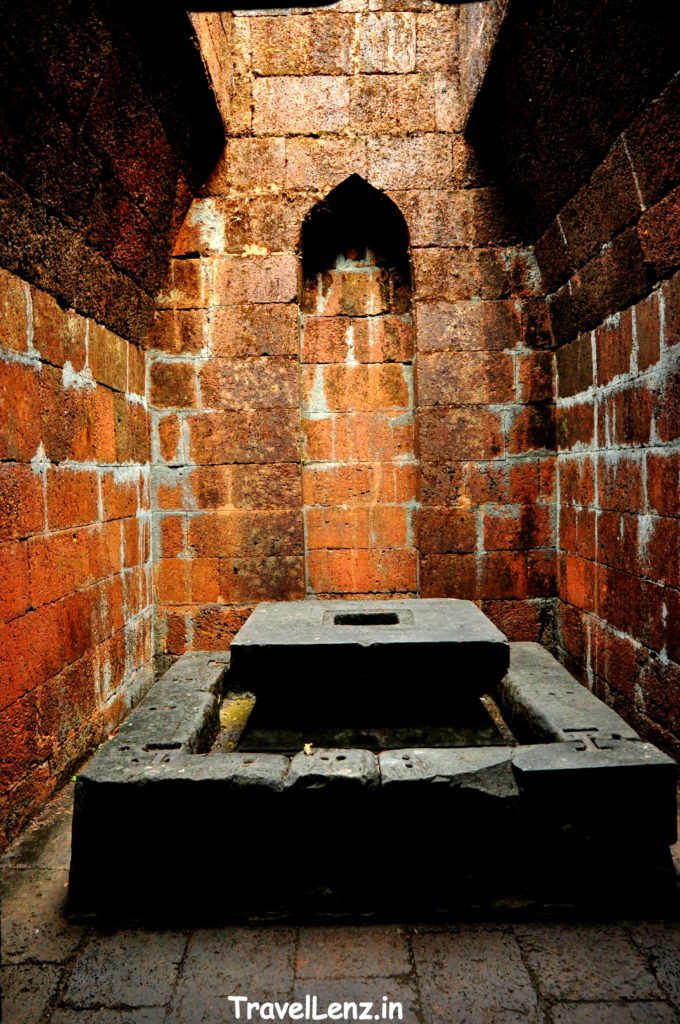Last Updated on May 20, 2021
After Ta Prohm, we traced our way back to a couple of temples we had skipped on our way – the twin temples of Thommanon and Chau Say Tevoda. After parking our car near a small market and dodging a few little girls who came after us trying to sell their souvenirs, we took a good look at the twin temples.
Thommanon and Chau Say Tevoda
Thommanon and Chau Say Tevoda temples are situated opposite to each other.
Thommanon was a small temple with a single tower and a mandapa. The temple looked quite pretty against the jungle backdrop. The name Thommanon is said to be derived from ‘Dhamma’ another term for Dharma which means teachings, and ‘nanda’, meaning supreme wisdom.
We climbed up and found that the temple’s carvings on the outer walls and main hall were intricate and very well preserved. The main sanctuary was crowned by a well-carved gopura.
Some of the doors were topped with ornate lintels. We found an image of Kailasodharana – lifting of Mount Kailasa by Ravana on one of the lintels and Lord Shiva meditating on Kailasa on another.
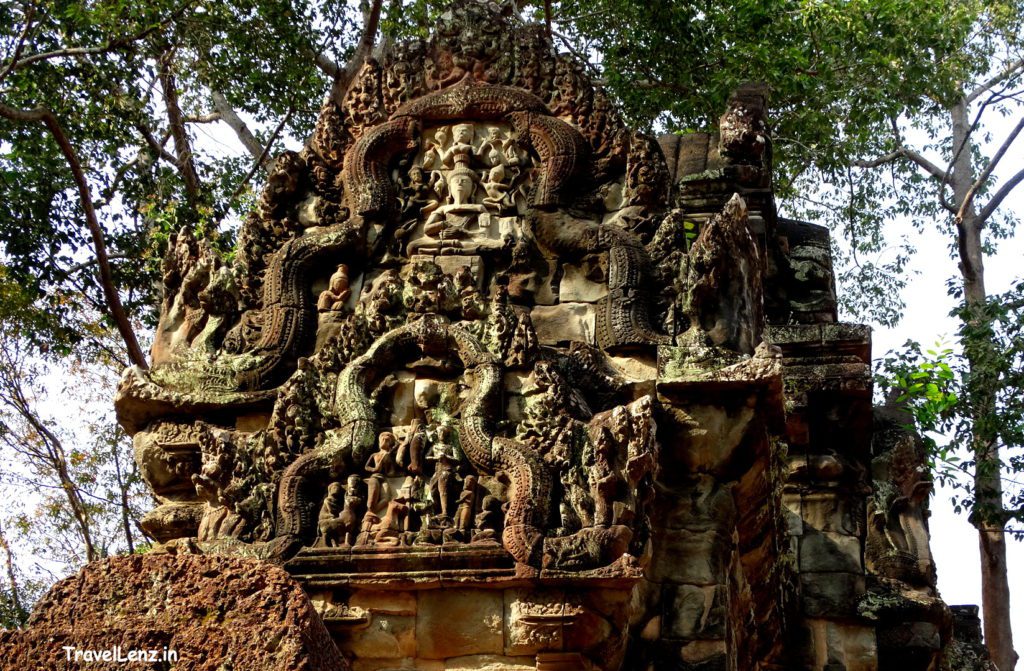
The other carved images we found were that of elegant Apsaras. The Apsaras had flower headgears, necklaces, waistbands, belts, and anklets.
They were posing in the Khmer style of dancing, holding flowers between their ring finger and thumb, in the classic devamudra pose.
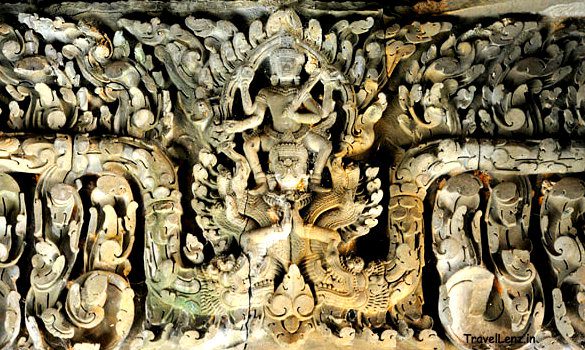
Inside the mandapa we found a well-preserved Vishnu riding on his mount Garuda.
Chau Say Tevoda
Directly opposite to Thommanon stood another temple ruin – Chau Say Tevoda.
Chau Say Tevoda was not as maintained as Thommanon and we could see some restoration work was going on. We later found a board saying that a joint project by the governments of Cambodia and China was in charge of the restoration work. Nevertheless, the restoration project ran into problems when the Chinese restorers chose to totally reconstruct the temple buildings by including newly fabricated stones.
We found a few lighter coloured blocks that indicated that they were new, and part of the restoration project. A few ramps were built around the temple connecting the different buildings.
The slightly raised causeway was supported by pillars beneath. The temple had two smaller libraries.
There were Apsara carvings which had restored sections that did not match up to the artistic quality of the original Khmer sections.
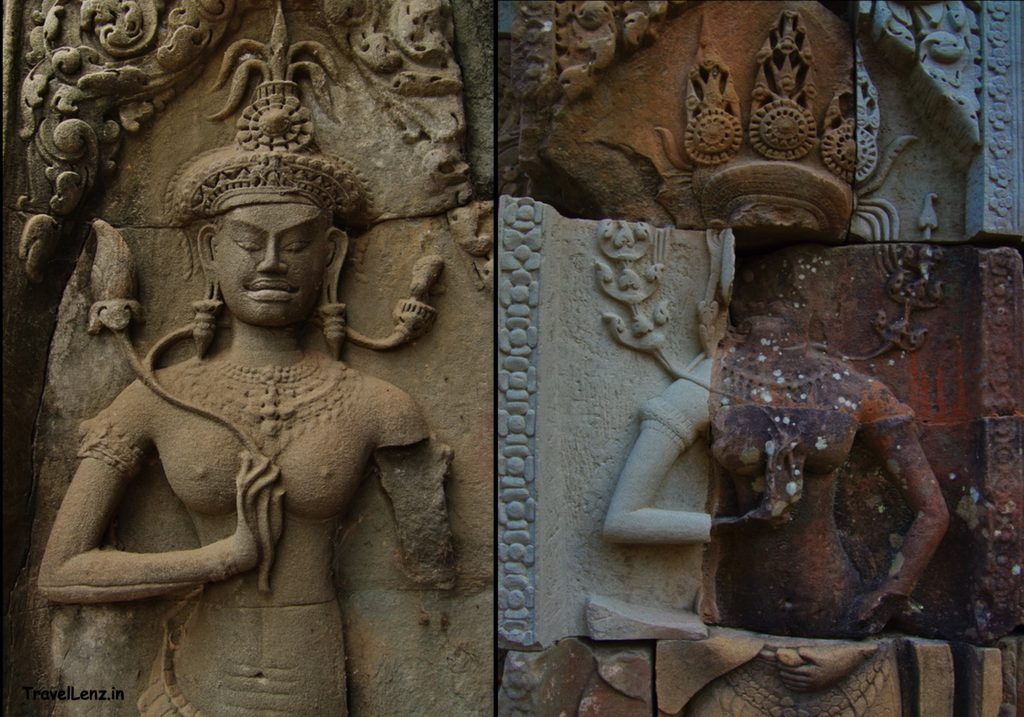
Tes mentioned that a lot of stone masonry had tumbled down into the nearby Siem Reap River.
In one of the shrines was the base of a Shiva linga.
Both Thommanon and Chau Say Tevoda were built by Suryavarman II, around the middle of the 12th century.
Our next destination was called the Gate of the Dead, a gate that had long been abandoned to the jungle.


